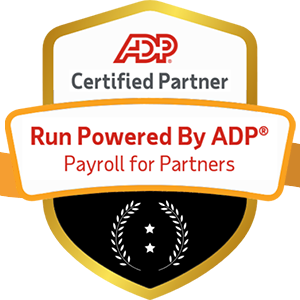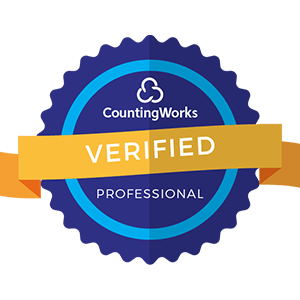
In today's workplace, it's not uncommon to find employees from four or even five generations working side by side. Each age group, from the Silent Generation to Gen Z, brings unique strengths, values, communication styles, and expectations to their roles. While this generational diversity can be a significant asset, it can also present challenges for managers trying to lead cohesive, collaborative teams.
As an HR or people operations professional, how can you harness the power of a multigenerational workforce while avoiding common pitfalls? What are the secrets to creating an inclusive culture that engages employees of all ages? Here are some key strategies to bridge the generational divide and bring out the best in your age-diverse teams.

The first step is gaining a deeper understanding of what makes each generation tick. While you want to avoid broad stereotyping, it's helpful to be aware of the defining traits and formative experiences of each age group:
Of course, these are broad strokes. Not every individual will match their generational profile. The key is using these insights to better relate to team members while recognizing their unique qualities.
Armed with generational knowledge, it can be tempting to tailor your management style to each age group. A Boomer may prefer in-person meetings, while a Millennial gravitates to Slack. But be careful not to take this too far.
Treating employees differently based on age is not only discriminatory, it can backfire by reinforcing stereotypes and creating resentment. A one-size-fits-all approach, on the other hand, ignores the diverse needs and preferences within your team.
The solution is finding a middle ground - establishing baseline expectations and communication channels while allowing room for individual customization. Standardizing certain practices, like performance reviews, ensures fairness and consistency. However, giving employees options like feedback methods enables them to engage in ways that work for them.

One of the most significant benefits of a multigenerational workforce is its wealth of knowledge and experience. Each age group has valuable lessons to share, from a Baby Boomer's institutional memory to a Gen Zer's innovative spark.
Innovative companies tap into this gold mine through reverse mentoring programs, learning lunches, job shadowing, and other cross-training initiatives. By encouraging employees to learn from colleagues of different ages, you break down silos, transmit crucial knowledge, and build empathy across generations.
These exchanges should be wider than hard skills. Invite a Millennial to share their perspective on social media marketing and have them explain their generation's values around diversity and inclusion. Ask a Gen Xer to teach younger colleagues the art of working independently and have them reflect on what work-life balance means at their life stage.
The goal is to get everyone to walk a mile in each other's shoes. When team members understand how age and experience shape their colleagues' views, they are better equipped to collaborate effectively.
With five generations in the workforce, a one-channel-fits-all communication strategy no longer works. While older workers may favor phone calls and face-to-face conversations, younger cohorts are more comfortable with texts, instant messaging, and social collaboration tools.
However, the solution doesn't cater to each generation's preferred medium. It ensures essential messages get through by communicating them in multiple ways. Don't just send that benefits update via email—announce it in a meeting, post it on your intranet, and mention it on Slack.
Repetition and multichannel distribution ensure everyone gets the memo, regardless of their communication style. It also reinforces the notion that all methods are valid, preventing any group from feeling left out of the loop.
Be sure to set clear guidelines around which channels to use and when. Reserve texting for urgent issues rather than casual chats, for example. Establish expected response times for each medium. And don't forget to solicit feedback some employees may have accessibility needs or cultural considerations that influence their channel preferences.
Flexible work arrangements are a big draw for employees of all ages. Whether it's a Boomer phasing into retirement, a Gen X parent juggling family commitments, or a Millennial seeking work-life integration, everyone appreciates having more control over when, where, and how they work.
Offering options like telecommuting, flexible hours, compressed workweeks, and job sharing boost engagement and retention and levels the playing field across generations. A Gen Zer can log on from their living room couch while a Baby Boomer dials in from their vacation home.
Of course, managing a dispersed team comes with challenges, from communication breakdowns to feelings of isolation. Managers need to be proactive in keeping remote workers connected and engaged. Regular check-ins, virtual team-building activities, and opportunities for in-person collaboration can help far-flung colleagues feel part of the group.
Flexibility shouldn't mean a free-for-all, however. Set clear expectations around availability, responsiveness, and results. Use project management tools to keep everyone on track. And remember to celebrate successes, whether your team is scattered across time zones or gathered in the break room.
Meetings are a notorious source of generational friction. Younger workers may find them a waste of time, while older colleagues see them as crucial for collaboration. Digital natives may prefer virtual meetings, while tech-skeptics favor face-to-face gatherings.
To make meetings work for everyone, start with a clear purpose and agenda. Assign pre-work when possible so no one feels their time is wasted—set ground rules around technology use, like laptops closed unless note-taking or presenting.
Vary meeting formats and locations to cater to different communication styles and engagement preferences. A walking meeting may energize Gen Zers, while a sit-down brainstorm appeals to Boomers.
During the meeting, be conscious of group dynamics. Make sure everyone has a chance to contribute, regardless of rank or seniority. Use facilitation techniques to draw out quieter voices and keep dominant personalities in check.
Afterward, share a recap and action items in writing for those who prefer to process information visually. And don't forget to solicit feedback on the meeting itself - a quick poll or survey can surface ways to make them more inclusive and effective.
Creating a genuinely multigenerational workforce requires more than tactics and techniques. It demands a fundamental shift in mindset and culture. Leaders must cultivate an environment where everyone feels welcomed, valued, respected, and heard, regardless of age or tenure.
That starts with modeling inclusive behavior at the top. Executives and managers set the tone through their words and actions. They must call out bias when they see it, whether it's a joke about "old-timers" or a dismissive comment about "lazy millennials."
Inclusive leaders also practice generational humility, recognizing they have much to learn from colleagues of different ages. They tap into the wisdom of older workers while remaining open to the fresh ideas of younger ones. Most importantly, they see people as individuals, not representatives of a generation.
Building an inclusive culture also means examining policies and practices for unintended age bias. Do your recruiting methods attract candidates of all ages? Do your development programs offer growth opportunities for workers at every career stage?
Answering these questions requires disaggregating employee data by age and analyzing it for gaps and disparities. It also means gathering input from employees across the generational spectrum to understand their unique needs and challenges.
However, inclusion efforts should continue beyond the hiring and promotion stages. To retain multigenerational talent, you must create an environment where every employee can thrive. That means providing resources and support for workers at different life and career stages, from student loan repayment assistance to elder care referrals.
It also means celebrating the diversity of your workforce through employee resource groups, Heritage Month observations, and other cultural events. By highlighting the contributions of all generations, you send the message that everyone belongs and brings value to the organization.

Managing a multigenerational workforce has its challenges. Differing communication styles, work preferences, and values can lead to misunderstandings and conflict. Getting five distinct generations to collaborate harmoniously requires intention, skill, and constant calibration.
But the payoff is worth the effort. When you tap into the strengths of each generation, you gain a competitive edge. Multigenerational teams bring diverse perspectives, skills, and experiences, leading to better problem-solving and decision-making. They are more innovative, adaptable, and resilient in the face of change.
Generational diversity isn't just good for business - it benefits individuals, too. Working with colleagues of different ages expands our worldview, challenges our assumptions, and keeps us mentally sharp. It helps us appreciate each person's unique gifts and insights, regardless of when they were born.
So, rather than seeing generational differences as a problem to be managed, embrace them as a strength to be leveraged. With the right strategies and mindset, you can create a workplace where employees of all generations thrive together.


